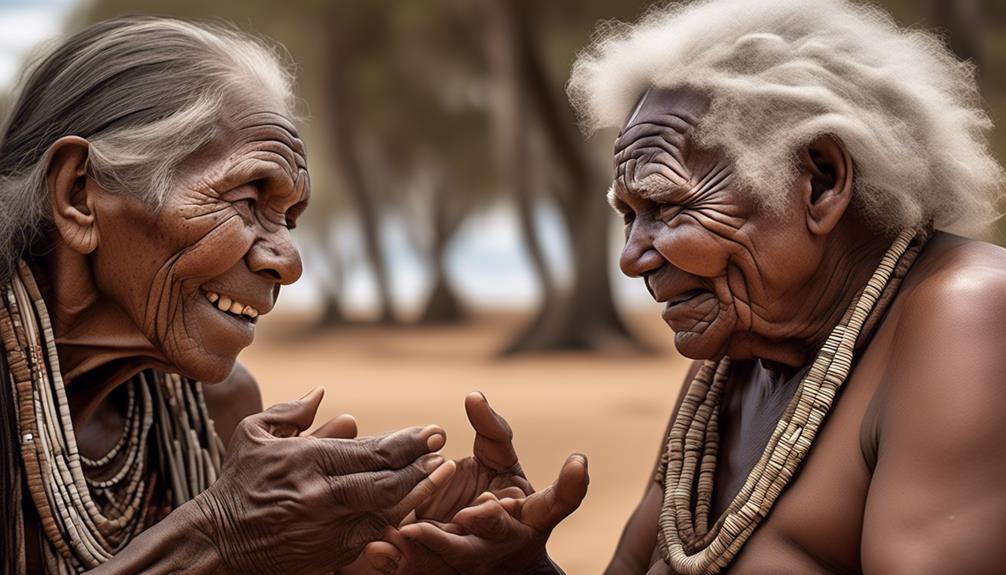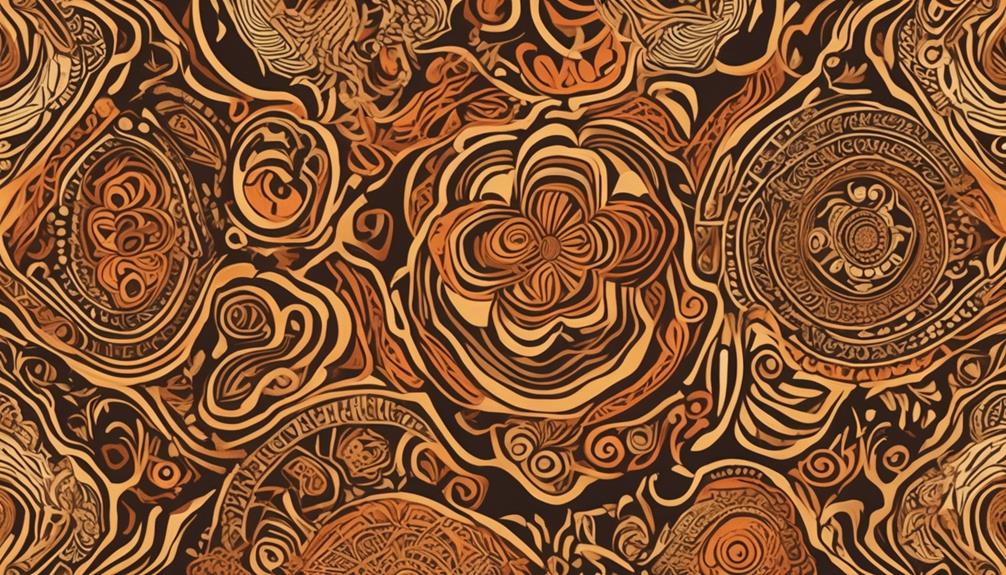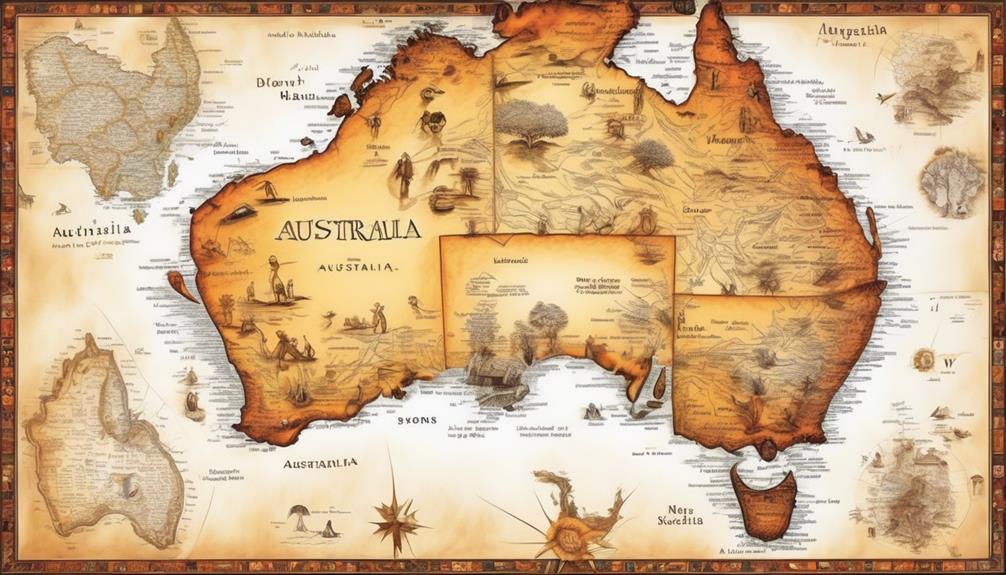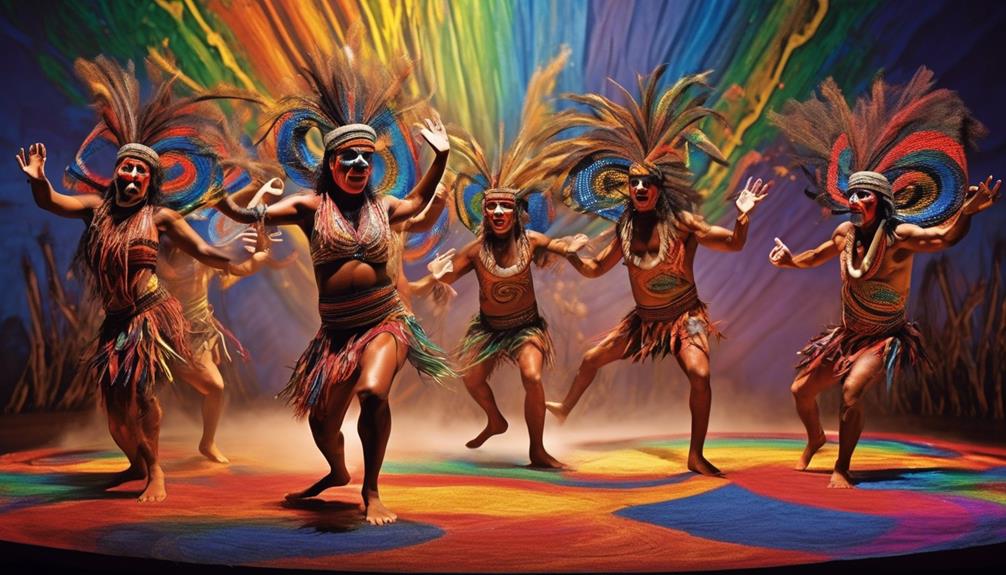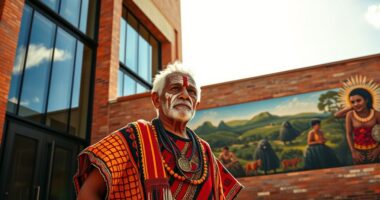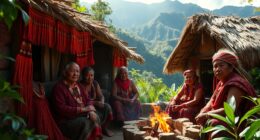Have you ever thought about the impact of incorporating Indigenous languages into your everyday conversations? This is a topic that requires thoughtful consideration and respect.
As a non-Indigenous person, you may wonder about the ethical and cultural implications of incorporating Aboriginal language into your speech and writing.
There are important factors to explore in this discussion, and understanding the nuances of language use can contribute to a more inclusive and respectful approach.
So, how can you navigate this complex but crucial aspect of cultural sensitivity?
Key Takeaways
- Cultural sensitivity and awareness are crucial when using Aboriginal language.
- Engage with the Aboriginal community to gain insights and guidance on proper usage.
- Recognize the importance of preserving indigenous languages for cultural heritage and intergenerational communication.
- Non-Indigenous individuals should seek permission, respect linguistic diversity, and uplift Indigenous language revitalization efforts when using Aboriginal languages.
Understanding Cultural Sensitivity
Understanding cultural sensitivity is crucial for effectively using Aboriginal language in a respectful and appropriate manner. Cultural awareness is fundamental when incorporating Aboriginal language into any form of communication. It's essential to acknowledge the historical and cultural significance of the language and its usage within the Aboriginal community. Language appropriation, if not approached with sensitivity, can lead to the misrepresentation and disrespect of the Aboriginal culture. This requires a deep understanding of the cultural context in which the language is rooted.
To navigate this terrain successfully, it's important to engage with the Aboriginal community to gain insights into the proper usage of their language. This collaboration fosters mutual respect and ensures that the language is utilized in a culturally appropriate manner. Furthermore, it's imperative to recognize the power dynamics at play when using Aboriginal language and to approach its usage with humility and mindfulness.
Ethical Considerations in Language Use
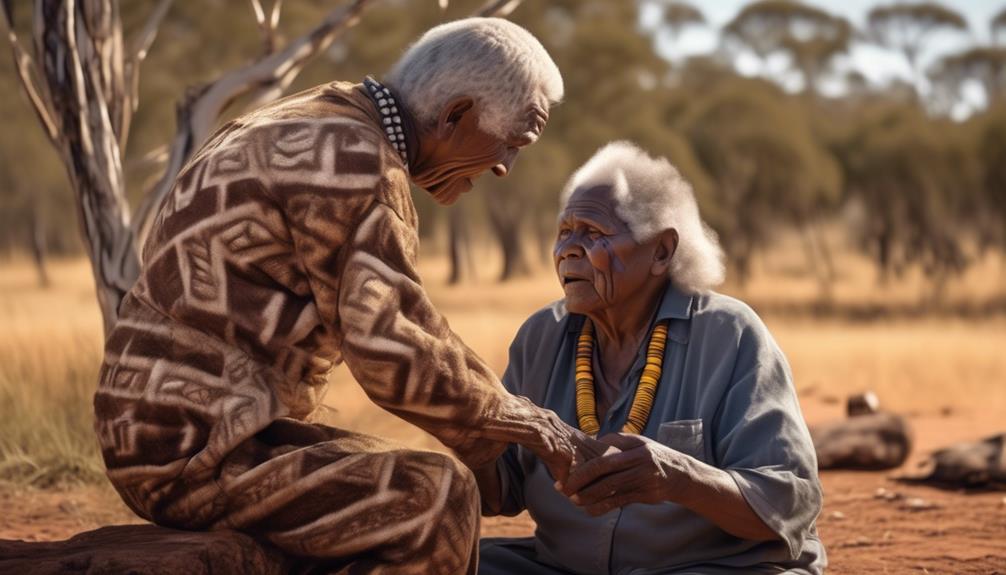
Navigating the ethical considerations surrounding the use of Aboriginal language requires a deep understanding of cultural sensitivity and a commitment to respectful engagement with the Aboriginal community. When considering ethical implications, it's important to recognize the potential for language appropriation and cultural appropriation.
In this context, appropriate use of Aboriginal language involves ethical considerations that go beyond simple linguistic accuracy. Here are key ethical considerations to keep in mind:
- Respect for Cultural Context: Understanding the historical and cultural significance of the language and its usage within the Aboriginal community is essential to navigate ethical considerations.
- Informed Consent: Seek permission and guidance from the relevant Aboriginal community members or language custodians before using the language in any public or commercial context.
- Benefit to the Community: Consider how the use of the language can benefit the Aboriginal community, and ensure that your usage respects and supports their cultural heritage.
- Avoiding Exploitation: Be mindful of the potential for cultural appropriation and strive to use the language in ways that honor and respect its origins.
Adhering to these ethical considerations is crucial in ensuring that the use of Aboriginal language is respectful, responsible, and supportive of the Aboriginal community.
Importance of Preserving Indigenous Languages
Preserving indigenous languages is vital for maintaining cultural heritage and promoting linguistic diversity. Language is a fundamental aspect of a community's culture, and when a language is lost, a significant part of that culture is also lost. Efforts to preserve indigenous languages are crucial for the survival of these cultures and for maintaining the diversity of human expression. Language revitalization programs are essential for ensuring that indigenous languages continue to thrive. These programs often involve recording and documenting endangered languages, establishing language immersion programs, and developing educational materials. Furthermore, the preservation of indigenous languages can have a positive impact on the overall linguistic diversity of the world, enriching the tapestry of human communication. The table below provides a visual representation of the importance of preserving indigenous languages.
| Importance of Preserving Indigenous Languages |
|---|
| Maintains Cultural Heritage |
| Promotes Linguistic Diversity |
| Preserves Traditional Knowledge |
| Fosters Intergenerational Communication |
Guidelines for Non-Indigenous Language Use

To effectively engage with Aboriginal languages, it's essential to understand and respect the cultural significance and usage protocols associated with these languages. When considering the use of Aboriginal languages as a non-Indigenous person, it's crucial to adhere to the following guidelines:
- Understanding Cultural Appropriation: Recognize that the use of Aboriginal languages by non-Indigenous individuals can raise concerns about cultural appropriation. It's important to approach the use of these languages with sensitivity and respect for their cultural and historical significance.
- Seeking Permission and Collaboration: Prior to using Aboriginal languages, seek permission from the relevant Indigenous communities or language custodians. Collaboration with Indigenous speakers and communities can ensure that the use of the language is respectful and appropriate.
- Respecting Linguistic Diversity: Acknowledge the linguistic diversity within Aboriginal languages and avoid generalizing or homogenizing them. Each language and dialect has its own unique characteristics, and it's essential to respect and represent these nuances accurately.
- Promoting Indigenous Voices: Consider how the use of Aboriginal languages can support and amplify Indigenous voices and initiatives. Non-Indigenous individuals should prioritize uplifting Indigenous language revitalization efforts and promoting Indigenous language speakers and educators.
Engaging With Aboriginal Language Respectfully
Engaging respectfully with Aboriginal languages requires a deep understanding of their cultural significance and a commitment to honoring their linguistic diversity. Respecting traditions is paramount when engaging with Aboriginal languages. This entails acknowledging the historical and cultural context in which the language is spoken and being mindful of the protocols and customs associated with its use.
Learning pronunciation is another crucial aspect of engaging with Aboriginal languages respectfully. Proper pronunciation demonstrates a genuine effort to honor the language and its speakers. It's essential to seek guidance from fluent speakers or language experts to ensure accurate pronunciation, as mispronunciation can be disrespectful and perpetuate misconceptions about the language.
Additionally, engaging respectfully with Aboriginal languages involves understanding the nuances and complexities of the language, as well as recognizing the significance of certain words, phrases, and expressions within the cultural framework.
Frequently Asked Questions
Are There Any Specific Cultural Taboos or Restrictions When Using Aboriginal Languages?
When using Aboriginal languages, it's important to be culturally sensitive and respectful of language preservation. Specific cultural taboos or restrictions may vary among different Aboriginal communities, so it's essential to approach the use of these languages with awareness and humility.
Understanding the significance of these languages within each community and seeking guidance from knowledgeable individuals can help navigate any potential taboos or restrictions associated with their use.
How Can Non-Indigenous Individuals Support the Preservation of Indigenous Languages Without Appropriating Them?
To support the preservation of indigenous languages without appropriating them, non-indigenous individuals can engage in language learning programs, cultural sensitivity training, and community support initiatives.
Respecting the taboo awareness and understanding inadvertent harm is crucial.
Statistically, only about 20% of the world's 7,000 languages are actively being taught to the next generation.
Are There Any Regional or Community-Specific Guidelines for Using Aboriginal Languages?
When using Aboriginal languages, it's crucial to be aware of regional guidelines and community-specific restrictions. Different Indigenous communities may have their own protocols and expectations regarding language use.
Respectfully engaging with local elders and language experts can provide valuable insights into these guidelines. In some cases, specific permissions or cultural awareness training may be required.
Adhering to these regional and community-specific guidelines demonstrates respect for Indigenous languages and their custodians.
What Resources Are Available for Non-Indigenous Individuals to Learn and Engage With Aboriginal Languages Respectfully?
To engage respectfully with Aboriginal languages, there are several steps you can take. First, seek learning resources and preservation support. This can involve finding books, apps, or websites that provide information and lessons on Aboriginal languages. Additionally, consider reaching out to local Indigenous organizations or language centers for guidance and support.
Next, it is important to understand regional guidelines and cultural sensitivity. Aboriginal languages vary across different regions, so make sure to research and learn about the specific language and cultural practices of the community you are engaging with. This will help you avoid unintentional cultural appropriation or misuse of language.
Respectful language use is crucial for language engagement. When learning or using Aboriginal languages, be mindful of the history and cultural significance of these languages. Use them with respect and avoid appropriating or commodifying them.
When seeking language learning programs and materials, look for those that have been developed in collaboration with Indigenous communities. These programs are more likely to be culturally appropriate and respectful. By supporting these initiatives, you are also supporting the preservation and revitalization of Aboriginal languages.
How Can Non-Indigenous Individuals Ensure They Are Not Inadvertently Using Aboriginal Languages in a Disrespectful or Harmful Way?
Ensuring cultural sensitivity when engaging with Aboriginal languages requires mindful language learning and respectful engagement with Indigenous communities. Avoid inadvertently using these languages in a disrespectful or harmful manner by seeking guidance from Indigenous language speakers and scholars.
Show respect by acknowledging the importance of these languages and the cultural significance they hold. Remember, your actions can impact communities, so approach with care and consideration.
Conclusion
In conclusion, when engaging with Aboriginal language, it's important to tread carefully and with respect. Just as one would navigate a delicate ecosystem, one must handle Indigenous languages with care and mindfulness.
Through understanding cultural sensitivity and ethical considerations, we can work towards preserving and honoring these invaluable linguistic traditions.
Let's approach Aboriginal language use as a precious and fragile tapestry, weaving it into our interactions with reverence and thoughtfulness.
